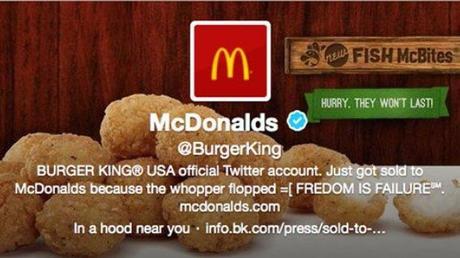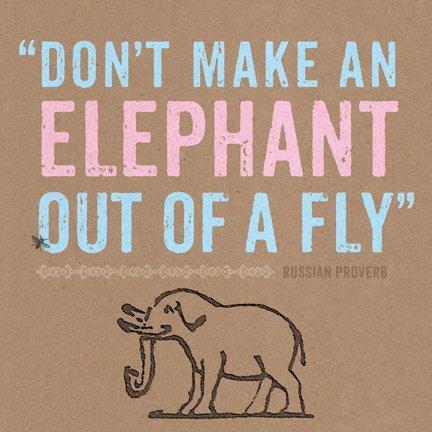In Marketing, of any kind, there will always be failures. Failures to reach a target, Failures in a product or service launch, Failures in communications etc etc – as Murphy’s law states
Anything that can possibly go wrong, does.
Before we dive into this post I want to quickly point you to a few places which talk about embracing failure in business generally.
- Richard Branson on Never Giving Up - entrepreneur.com
- Tom & David Kelley on Failure in Design – time.com
- Heidi Halvorson talks about Permission to Screw Up – 99u.com
- Joe Geoghegan says Failure is Everywhere – HuffingtonPost.com
Accounting for Failure in Marketing
If you ask almost any business about how it came to be a success, what marketing it did to get where it is, or what lessons it has learnt over it’s life, you will find that failures in marketing are everywhere.
Here are some examples from big brands…

Lets look at a more examples for a failure in marketing and how failure can be embraced to turn a campaign on it’s head and success be found. With thanks to Kate Simpson (bio below) for these scenarios she has encountered.
The None Story Story

Often the response was poor, and for many PR’s the story ends here.
However, if there’s press you really want to get into and feel you have relevant content for that audience it is always worth pushing it.
I’ve worked on both sides of the fence and when I was a journalist I’d see the major mistakes that PRs made… Those “did you get my press release” calls which went nowhere…
After sending out the initial release I then zone in on some specific titles which I believe should be running the story. I’ll look at what other types of story they have run in our sector, and I’ll look at what stories they have covered on our competitors. Then I’ll arm myself with some interesting facts and figures. These may not have been relevant to the original story but are facts that I think may spark the publications interest.
I’ll then phone the journalist…. In my experience, many are PR weary and so initially prickly… however once you start to speak with authority on their industry and start to give them information which is new and interesting the barriers come down and the opportunities build. I’ve made some great relationships with national and broadcast press by using this approach, and this has led to more stories being picked up than had I not used this method.
Targeted Mailshot
I did a campaign for a company where we had a very targeted mailing list and a specific message to get across…. It was a sales pitch, but the message was very valuable, offering a much needed service to fill a gap in the market. We knew there would be interest if the recipients actually read the mail out, the challenge was to get them to read it.
This was a paper mailshot and we designed a flyer and letter – kept it very simple, boldly pushing the main message… The envelope was important, as we were aware that many mailshots don’t even get opened. We put a design on the envelope that looked like a rubber stamp which clearly stated the main gap in the market which we were looking to fill and mentioned legislation.
We sent this out in May, and at this point didn’t get many responses, albeit the ones we did get were very lucrative.
We pushed the campaign message elsewhere – in the press, at exhibitions, conferences and via social media and then 5 months later we sent the exact same campaign to the same recipients again. This time we got a 30% response rate, much better than we had ever expected….
The trick in both these cases is to use some methods to get your message out to a wide audience quickly but to also use other methods to target specific audiences that you really want to have success with…
Not sure about carrying on? Here are some interesting facts.

How Loving Data Can Help You Embrace Failure
I’ve been in Digital Marketing for years, I love Analytics of all kinds but I do hate the spiel about how Big Data can be insightful and tell you exactly what your audience are doing. Big Data (or any data for that matter) is not just about those things, its about giving you a strategic advantage over competitors, it’s about enabling precision in targeting your audience segments and although getting the data can be costly (sometimes) it is about giving you a larger return on investment (ROI) – a bigger bang for your buck.
Companies like O’Reilly are taking full advantage of all the data they can get, from book sales offline and footfall in stores to the same kind of data online, to using enhanced computerised booked to track what users are interested in within books. It makes for a better reading experience for you and me, but more than that we enjoy the experience more and will buy more books! A Win for O’Reilly.

But that’s sales stuff, and for most of us in Marketing that is what we want, but can embracing Big Data help in other ways? The answer is Yes, one great scenario is how Mass Data can help control the flow and direction of travellers, in specific when they are all heading to an event. So maybe it’s a concert at the London O2 Arena, or the FA Cup Final, or maybe the London Olympics 2012… all of these examples fall to Transport for London to help with but how do they do it?
The answer is Massive Data, Live Data – taking the Olympics as the main example here – travelers who used public transport, any form, had data sent back to a central hub – using the Oyster Card system, none of the data was personalised – this was then used by Londons giant computer system to decide whether more routes needed more buses, more tube trains or otherwise. It was also used in other ways, such as if they knew that there were 5 full buses coming upto a set of traffic lights the computer may choose to alter the flow to allow the buses through more quickly. Or with special services, if the system knew the bus was full it could potentially send the bus via a different quicker route to keep the audience happy. This worked both traveling into and out of London, and is part of the everyday system in use in London. It’s not direct marketing to the audience but at the same time it is, it’s about showing London as an amazing venue, about showing TfL can cope and very well and it’s about showing one of the worlds busiest cities at it’s best – it’s a huge marketing campaign for London in the 21st Century.
All that sound a little to big for you? What about other data?
Ok, still not sure Data is something you should embrace? Lets look at how SEO Andy uses data available to it.
Like most sites, SEO Andy uses web analytics (from Google Analytics), it has hundreds of blogs (almost 500) on a variety of subject matter and varying length. It is connected with my social media profiles and more importantly has a community of contributors and a loyal audience. Most blogs which post on a regular basis will have this… but what Data do i use and how?
Web Analytics & Blog Subjects – Using web analytics I can look for trends in which subject matter is becoming popular, I can look at categories of posts or even individual posts. Over time you can build a picture for seasonality or more importantly upcoming trends we could be first to cover. The other thing you can do is look at the length of posts and how this correlates with visitor numbers and visitor length, whether these users then view another post or bounce away quickly before reading the full article.
Another great tool for looking at trends if your site is new or you want to cover a newer subject is Google.com/Trends.
Social Media Profile Data – Getting data from your social media isn’t easy but using tools like TwitterCounter you can compare how tweet frequency can increase or decrease followers and you can compare yourself to others in the market too. With your statistics from facebook page admin, it is a good way to get a little insight into what your social media efforts are doing for you. Another great tool for social media insight is ThinkUp, an open source tool that is currently self install, though will be offered as a service from mid-January.
Pulling Website Data Together – OK the above may sound a bit like hard work, but what if I told you that all you need to do is click a few buttons to authorise yourself and all the data can be combined into one giving you some amazing data points which can then help you further your website. The solution is a free service called SumAll (free at the time of writing) – it adds all of your social media info, your analytics data, connect platforms such as mailchimp, basecamp and paypal (you can also connect using the API if you have a specific ecommerce platform not currently available) – this means that not only can you see what effect your external marketing is doing but also monitor how things your staff do in projects works to your advantage over all… this is all about ROI and clearly helps demonstrate this.
Hopefully, you will now see Data, big or small, can help your business, it can help your marketing even if it does mean a little effort today.

Kate Simpson is a communications manager for a global manufacturing company and a charity director. Kate has 12 years marketing industry experience including 5 years in business journalism.
You can find Kate on Twitter @MissDeSimpson and LinkedIn.
Russian Elephant Mole Hill Graphic – Gail Perry Johnston
London Oyster Cards – Visit London
Original Content by SEO Andy @ Embracing Failure – and My Love of Data

